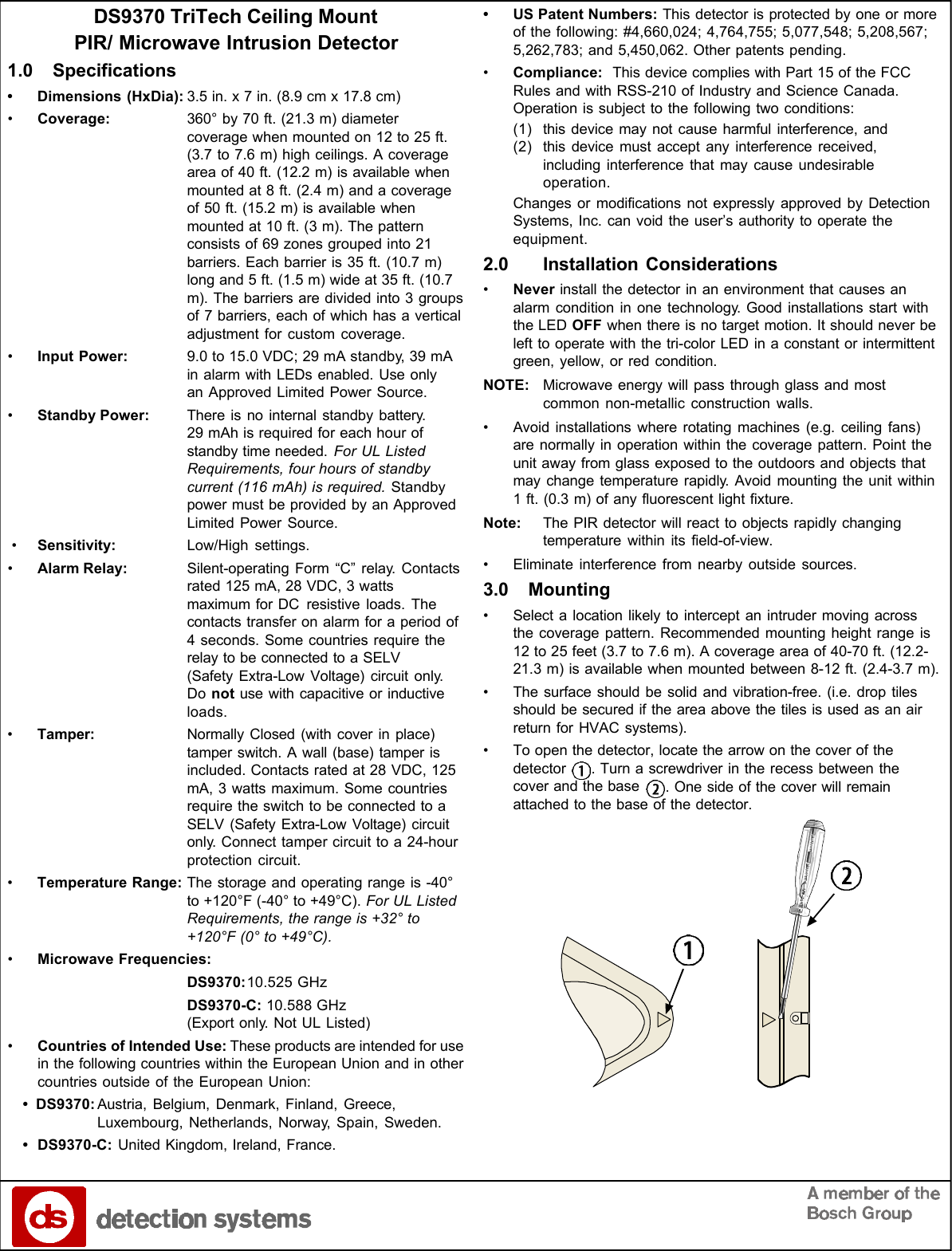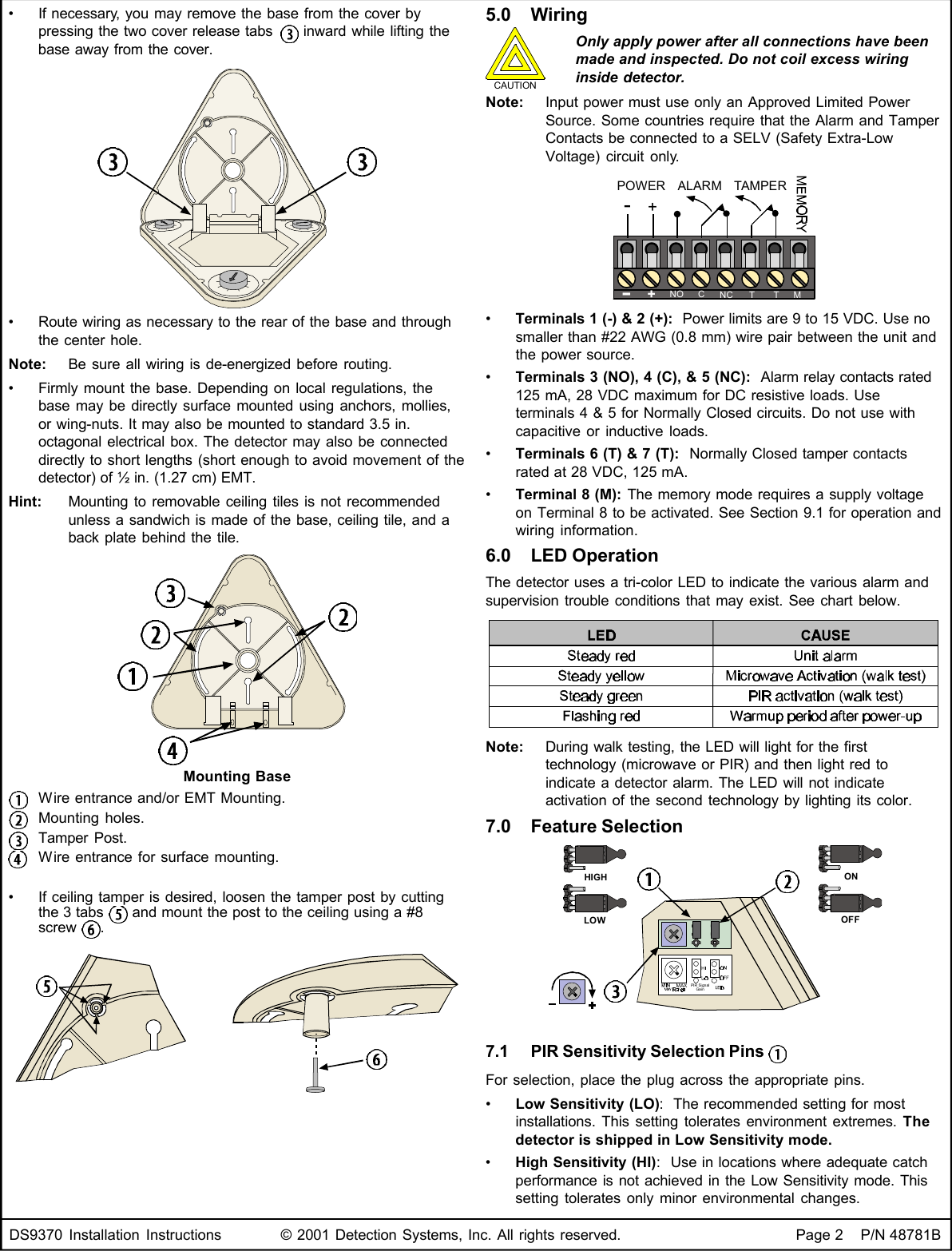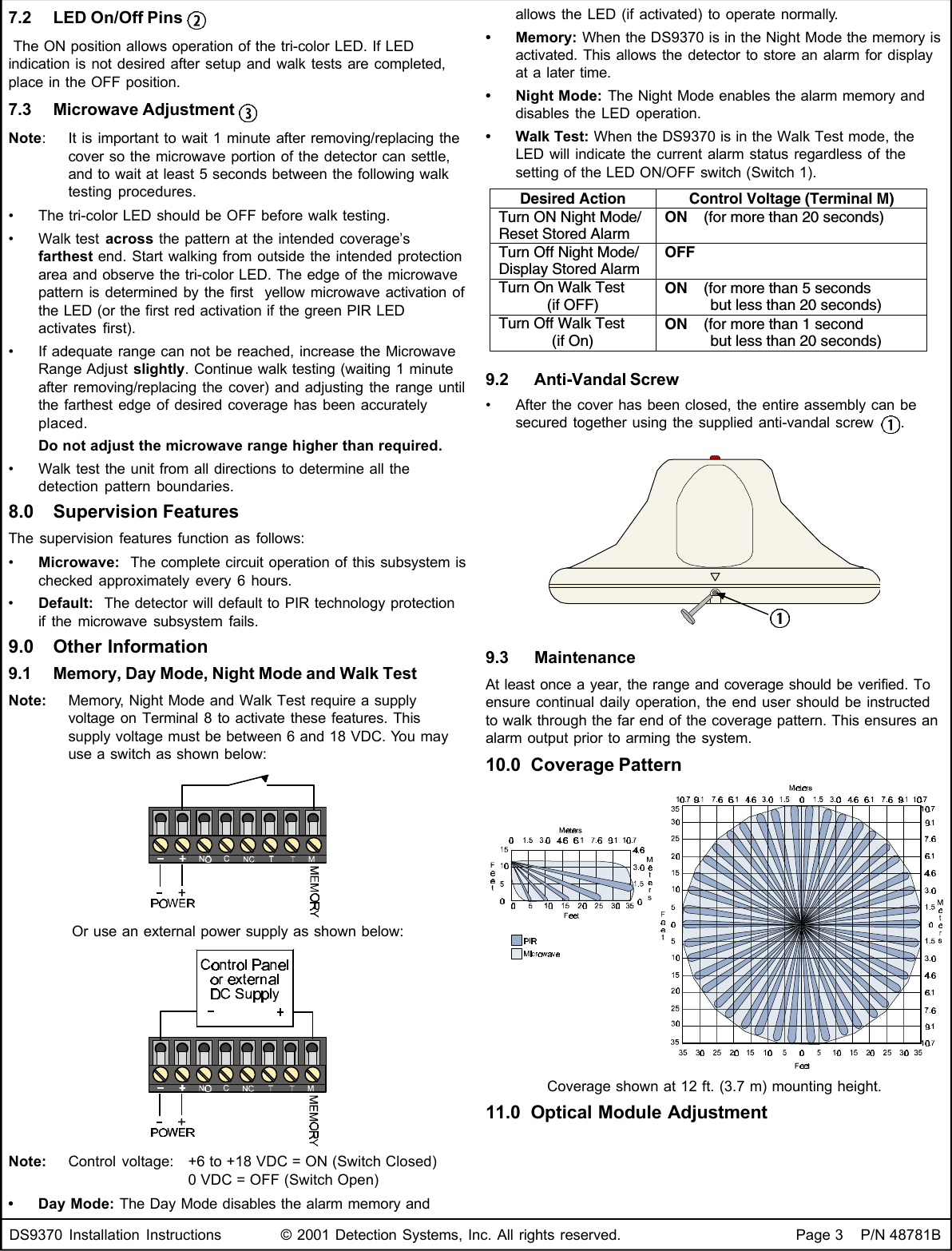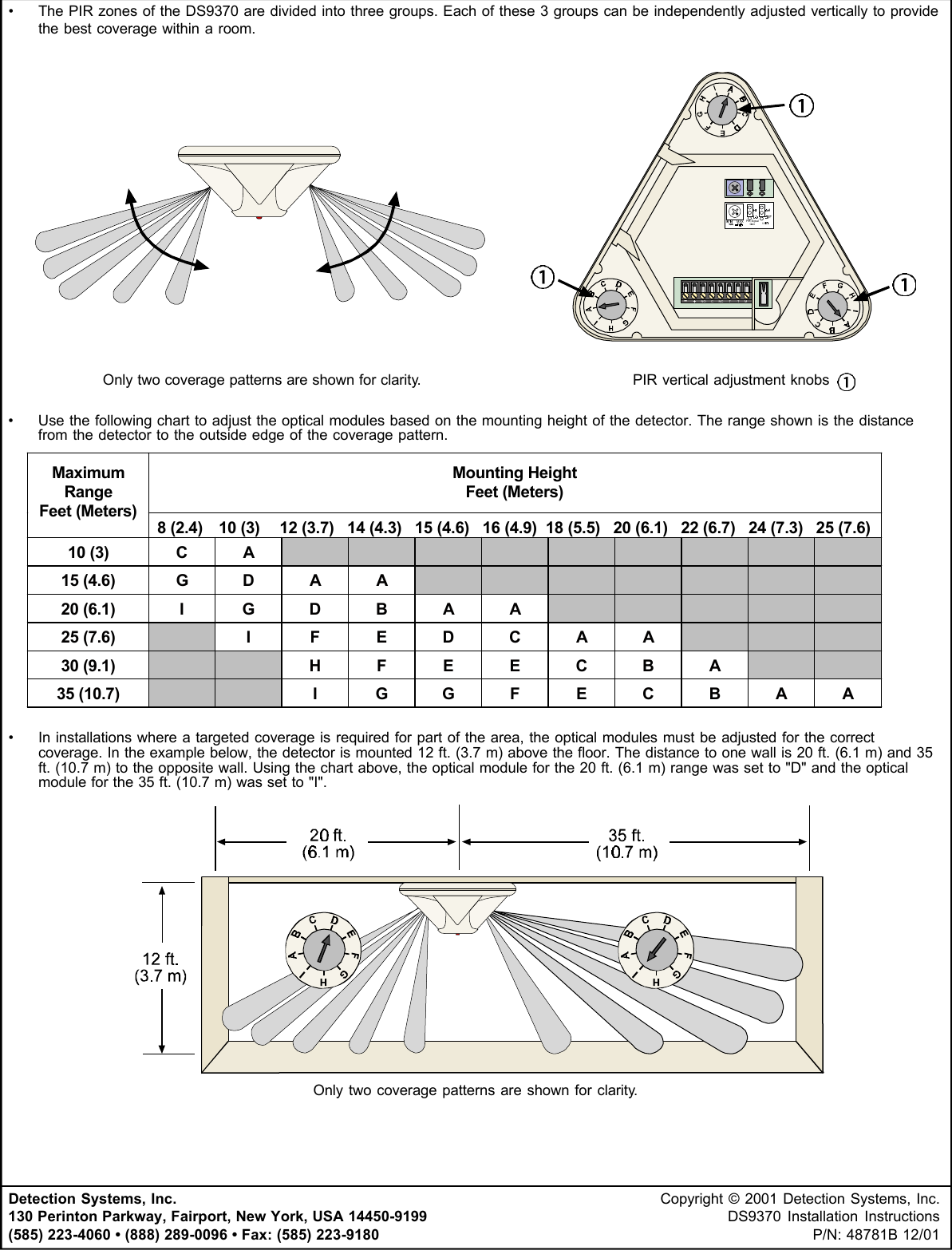Bosch Security Systems 9370 Tri Tech Ceiling Mount PIR/Microwave Intrusion Det User Manual C WINDOWS Desktop 48781B DS937
Bosch Security Systems Inc Tri Tech Ceiling Mount PIR/Microwave Intrusion Det C WINDOWS Desktop 48781B DS937
Exhibit D Users Manual per 2 1033 b3



